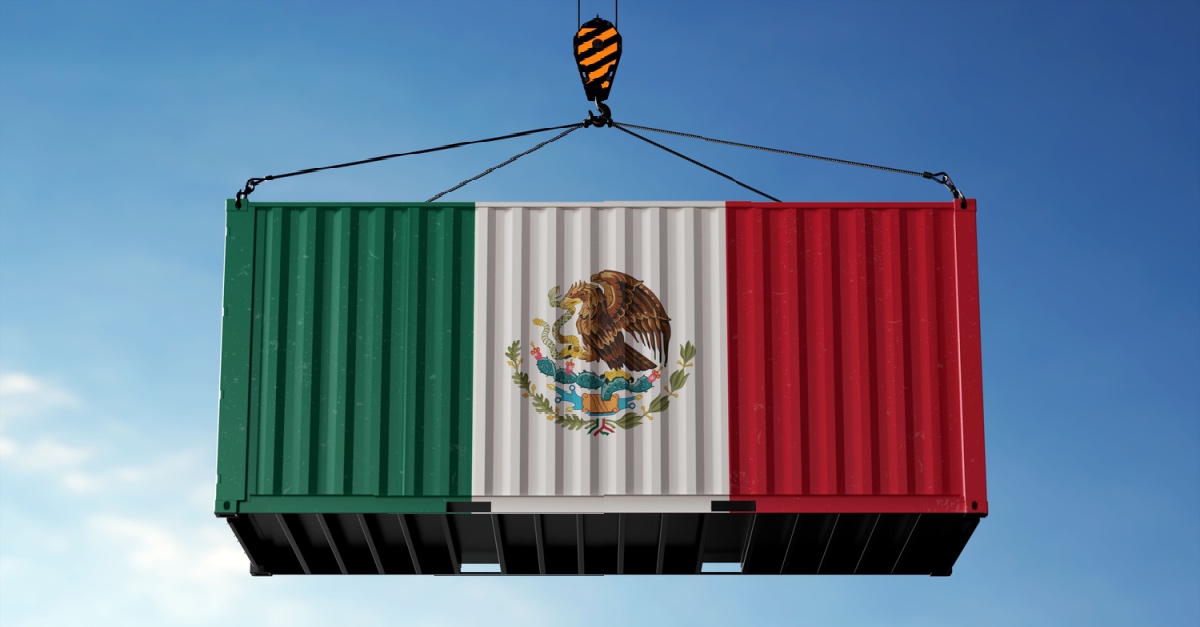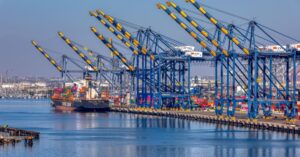The nearshoring boom in Mexico has attracted global ocean carriers like COSCO, CMA CGM, and MSC to open new shipping routes connecting Mexico to some of Asia’s emerging economies.
Join us as we explore the latest in Mexico’s nearshoring boom and news across the freight and logistics world. From rail giant Union Pacific’s bid to compete with the trucking industry to recent updates on the collapsed Maryland bridge and what is on the horizon for Dali, we have a lot to cover in this edition.
Continue reading to find out more.
COSCO is the Latest Global Ocean Carrier to Launch New Routes Between Mexico and Asia
COSCO joined other major shipping lines and global logistics providers to launch a new sea route connecting Mexico to major Asian economies.
In a bid to leverage the nearshoring boom and effectively reduce the risk of shipping operations from geopolitical tensions, more businesses across Asia, including China, South Korea, and Japan, are opening up shop in Mexico. Because of this, major shipping lines, including COSCO, CMA CGM, and MSC, have launched new direct routes connecting these Asian countries and businesses to Mexico. The shipping lines will connect major cities such as Ensenada, Manzanillo, and Lazaro Cardenas.
The surge in new shipping lines is a direct response to the growing demand for Asia-Mexico trade, primarily in China. COSCO’s new sea route will see the shipping giant offer a 15-20 day transit times from China to Mexico with port calls in Busan, Dalian, Ningbo, Shanghai, Qingdao (China), Ensenada, Manzanillo (Mexico), Yokohama (Japan).
Union Pacific Set to Compete With the Trucking Industry
Union Pacific (UP) has launched a new premium intermodal service between Southern California and Chicago that promises three days of shipping.
The new service is part of the rail company’s strategy to compete with the trucking industry. This expedited service allows the company to attract more freight currently transported by trucks. The company can achieve faster transit times by combining 70-mph speeds and improved efficiency in interchanging freight with other railroads destined beyond Chicago. The LA to Chicago route will be Union Pacific’s second daily service, following the Fontana, California to Northlake, Illinois, launched in April.
The new service reflects the successful partnership between UP and Scheider executives. The company’s 2030 goal of doubling its intermodal operations is well underway.
Recovery Complete, Controlled Demolition Up Next in the Francis Scott Key Bridge Collapse Saga
The recovery efforts of the workers who died in the March 26 Baltimore Bridge collapse have concluded, with all the deceased accounted for. There has also been a controlled demolition to clear the remnants of the bridge, freeing the container ship Dali and allowing for full port reopening.
For now, the temporary channels remain open. The Fort McHenry channel reopened on May 10, albeit in a limited capacity. Other permanent channels will reopen by the end of the month.
Dali has a major lawsuit with the state of Maryland, and the cause of the accident is still under investigation. However, reconstruction of the bridge is expected by Fall 2028, and it could cost close to $1.9 billion.
Avery Dennison Sails Through Finnish Port Strike with Supply Chain Savvy
Although there was a Finish port strike between March 11 and April 8, major adhesive materials maker Avery Dennison was able to avoid supply chain disruption.
According to the CEO, Deon Stander, it all began in 2022 when a similar strike brought the company’s entire supply chain to a standstill. It wouldn’t let history repeat itself, so its supply chain has spent the last couple of years building resilience. It leveraged supplier diversification and strategic safety stock. That means they no longer rely on single regional sources for raw materials, and the supply chain ensures that there is sufficient stock for customers during disruptions.
Thanks to a robust supply chain, the company avoided disruption and, more importantly, improved its service excellence.
Daimler Unveils Prototype For Electric, Autonomous Truck
Daimler is developing a self-driving truck, among others, as part of its zero-emission strategy.
The company has integrated a Level 4 autonomous driving system from Torc Robotics, a Daimler subsidiary, into a Class 8 electric Freightliner eCascadia. With the prototype and demonstration, Daimler intends to study what makes diesel and electric trucks different in terms of motion control and driving range when paired with autonomous systems. According to the company, this trucking technology could impact the middle mile, while not impacting long-haul trucking at the moment. However, there is a need for readily available charging infrastructure at terminals where autonomous electric trucks will pick up and drop off loads.
The company expects to commercialize by 2027.
Ocean Freight Rates Surge Due to Red Sea Disruptions
Ocean freight saw a significant increase in early May due to the ongoing issues in the Red Sea.
The primary cause of this disruption is the Houthi rebel attacks, which have forced ships to take longer, more costly routes around Africa’s Cape of Good Hope. The longer routes have meant a tighter capacity for these carriers. Since the end of April, ocean freight rates to the US West Coast, Northern Europe, and the Mediterranean have risen by $1,000 per FEU (40-foot equivalent unit) to $4,000-$5,400/FEU. Maersk is predicting a loss of capacity of 15-20% in key markets by the end of Q2 due to Red Sea disruptions, potentially lasting most of 2024.
Meanwhile, air freight rates have dipped in several regions since the start of May. However, rates remain high in the Middle East and Southeast Asia due to continued demand.
Transportation Never Sleeps With COGISTICS Transportation
We’re not just the average logistics provider in the market. At COGISTICS Transportation, we pride ourselves on being your end-to-end partner and driving success through collaborative logistics solutions.
With COGISTICS Transportation, complexity becomes clarity, and logistics becomes a competitive advantage. Leveraging over 30 years of expertise, we provide innovative, technology-driven logistics solutions by land, air, and sea — around the clock, around the world. Check out our expedited freight service and ocean freight operations, and then connect with us today to learn more.




